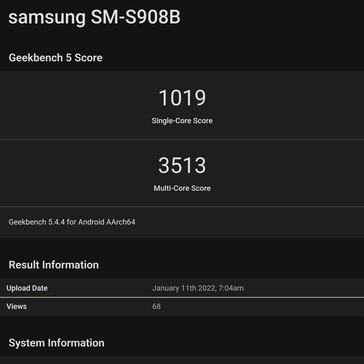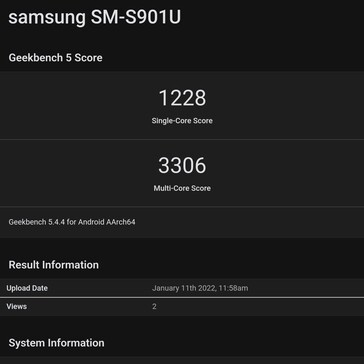Office Address
S.C Chatterjee Road - Bandel
Prantik Benepukir
IN - West Bengal
Hooghly - 712123

The Entire Tech Community was waiting For Samsung to launch its latest Exynos 2200 processor on January 11. However, the launch was postponed and an online report revealed that due to some performance issues the company has taken this decision. Now, the South Korean smartphone maker has released an official statement about the delay in the launch of Exynos 2200 chipset.
According to a Korean publication, Business Korea, Samsung has clarified the reasons behind the change of plans related to Exynos 2200. The company clarified that everything is fine and there are no performance or production issues with the chipset. The company also confirmed that it will unveil the latest Exynos chipset along with its flagship Samsung Galaxy S22 series.
Fans were Expecting Samsung to Launch the Galaxy S22 Series on The More Powerful Exynos Variant This time added to the factor of the RDNA2 GPU Architecture Residing Within.
Putting the Blame Towards ARM Mali-G78 MP14 The real culprit behind the delay, The New GPU is Expected to resolve the problems of the Exynos 2100, They Said That they Intend to Sharpen Our Competitiveness by Loading GPUs for Games into Mobile Devices.
Perhaps Selling the Snapdragon Variant Globally would have been a better Choice ? You Guys be the judge.
A Quick Update From the Company Official Claims That A Samsung official has reached out to Business Korea to clarify the reason behind the change of plans – everything is fine, there are no production or performance issues, instead the launch was rescheduled to coincide with that of the Galaxy S22 series.
“We are planning to unveil the new application processor at the time of launching a new Samsung smartphone. There are no problems with the AP’s production and performance,”
Samsung Official

The Exynos 2200 will be an octa-core chipset with one Cortex-X2 CPU core, three Cortex-A710 CPU cores, and four Cortex-A510 CPU cores. It is also expected to have an improved 5G modem, better image signal processing, and enhanced AI processing. With a RDNA 2 Mobile GPU Reported to be clocked approximately 1300 MHz


It is clear that Samsung has nerfed the Exynos 2200’s AMD RDNA2 GPU to keep thermals in check. Early tests showed that it could operate at 1,800MHz, but required a power budget of 10W, something that is mind-bogglingly high for a mobile device. Little is known about the GPU’s specs for now, but rumour has it that it could pack 4 CUs (Compute Units) and support raytracing on a hardware level.
As shared by leaker @The Galox_, the Exynos 2200 looks to have stopped by at Geekbench again, and put up some solid numbers this time out. The Galaxy S22 series’ SoC recorded a single-core score of 1019 and a multi-core score of 3513. In comparison, the Snapdragon 8 Gen 1 earns scores of 1228 and 3306 in the single-core and multi-core tests respectively.
While the Snapdragon 8 Gen 1 appears to have a handy advantage in the single-core segment at first glance, the source claims that the Exynos 2200 here was tested without an active Cortex-X2 super core. That explains the difference in single-core performance. The Exynos 2200 also has an edge in the multi-core tests, so these numbers bode quite well for the Samsung chipset.
Either way, the Exynos 2200 and Snapdragon 8 Gen 1 are built on the same node and with ARM’s V9 architecture on the CPU side, so it’s not surprising that both chipsets would offer similar CPU performance. GPU performance would make for more interesting reading, especially with the Exynos 2200 set to debut an AMD RDNA 2-based GPU. Some Users Claim that TSMC’S Node is better than Samsung, Well we will really have to wait for the sustained performance figures in real-world workload situations as well as thermal performance.
Then Again Exynos 2200 Snapdragon 8 Gen 1, Both of them Happen to Have Software Optimization, Developer Support Regarding Application / Games and Tasks Pending.